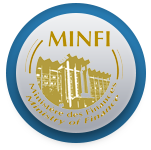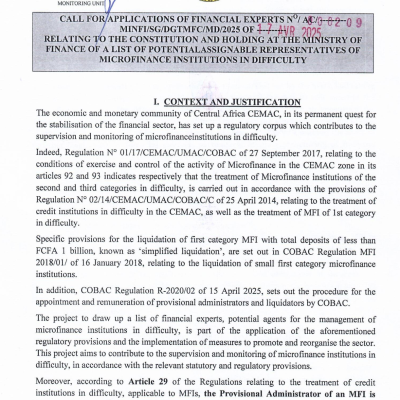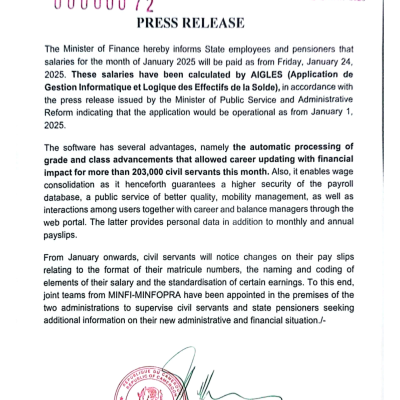
Cameroon has raised more than the 150 billion it was aiming for on the CEMAC financial market in its 7th bond issue, ECMR2023, which ran from 13th to 30th June 2023.
Cameroon once again shone on the Central African financial market with the 7th bond issue in its history, known as ECMR 2023, with the innovation that it was in multiple tranches. The State of Cameroon, which was on the market to raise FCFA 150 billion by the evening of 30 June 2023, came out with a jackpot of FCFA 176,692,640,000, representing a subscription rate of 117.8%. A total success that highlights the credibility of Cameroon’s signature in a particularly difficult economic context marked by difficulties such as the scarcity of liquidity and the tightening of market conditions, among others. On the strength of this satisfactory result, the Minister of Finance, Louis Paul Motaze, expressed in the relevant press release “his deep gratitude to the investor community and all other stakeholders for their support”.
In detail, the operation, which involved four tranches, was broken down as follows: for Tranche A, amounting to FCFA 40 billion, at an interest rate of 5.80% over a period of three years, 79,372,990,000 was raised, representing a subscription rate of 198%. For Tranche B, the envelope sought was also FCFA 40 billion, with an interest rate of 6.00% for a maturity of 4 years, the State was able to collect FCFA 61,613,380,000, i.e. a subscription rate of 154%. As for tranche C, whose objective was to recover CFAF 50 billion, with an interest rate of 6.75% for a term of 6 years, CFAF 25,071,520,000 was collected, representing a subscription rate of 50%, and finally tranche D, targeting CFAF 20 billion, with an interest rate of 7.25% for a term of 8 years, Cameroon was able to obtain CFAF 10,634,750,000.
As a reminder, the funds raised through the ECMR 2023 bond issue, with multiple tranches, which the State of Cameroon has just completed, will be used to finance certain projects included in the 2023 finance law, particularly in the public works, water and energy, urban development, transport and reconstruction sectors in disaster-stricken regions.




